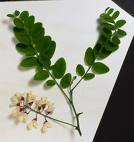Green Locust Tree Information
Images of Green Locust:






Green Locust grows in the following 58 states and provinces:
Alabama, Alberta, Arizona, Arkansas, British Columbia, California, Colorado, Connecticut, Delaware, Florida, Georgia, Hawaii, Idaho, Illinois, Indiana, Iowa, Kansas, Kentucky, Louisiana, Maine, Manitoba, Maryland, Massachusetts, Michigan, Minnesota, Mississippi, Missouri, Montana, Nebraska, Nevada, New Hampshire, New Jersey, New Mexico, New York, North Carolina, North Dakota, Northwest Territories, Nova Scotia, Ohio, Oklahoma, Ontario, Oregon, Pennsylvania, Prince Edward Island, Rhode Island, Saskatchewan, South Carolina, South Dakota, Tennessee, Texas, Utah, Vermont, Virginia, Washington, West Virginia, Wisconsin, Wyoming, YukonInformation about Green Locust:
The Robinia Pseudoacacia is commonly known as the Black Locust, False Acacia, Green Locust, Locust, Post Locust, Shipmast Locust, White Locust as well as Yellow Locust.
The currently accepted scientific name for black locust is Robinia pseudoacacia L. . There are no natural subspecies or forms, but many cultivars are available . Named varieties are as follows : Robinia pseudoacacia var. pseudoacacia Robinia pseudoacacia var. rectissima (L.) Raber Black locust hybridizes with Kelsey locust (Robinia kelseyi), New Mexico locust (R. neomexicana), clammy locust (R. viscosa), and bristly locust (R. hispida) .The original natural range of black locust is in two sections: 1) the central Appalachian Mountains from central Pennsylvania and southern Ohio south to northeastern Alabama, northern Georgia, and northwestern South Carolina, and 2) the Ozark Plateau of southern Missouri, northern Arkansas, northeastern Oklahoma, and the Oachita Mountains of central Arkansas and southeastern Oklahoma. Outlying populations thought to be part of the original natural range occur in southern Indiana, Illinois, Kentucky, Alabama, and Georgia . Black locust has been successfully planted in almost every state . Naturalized populations occur throughout the United States, southern Canada, Europe, and Asia .Black locust forms pure stands only on disturbed soils where there is no competing overstory vegetation. On good sites, single trees or small groups may persist and grow large enough to form part of the mature canopy . Black locust is found in the southeastern United States largely within oak (Quercus spp.)-hickory (Carya spp.) forests. It also occurs in naturalized populations in a wide range of types including blue ash (Fraxinus quadrangulata) savannas in the inner bluegrass region of Kentucky . Common tree associates in oak-hickory forest include black cherry (Prunus serotina), white ash (Fraxinus americana), sweet birch (Betula lenta), cucumbertree (Magnolia acuminata), black walnut (Juglans nigra), sourwood (Oxydendron arboreum), sassafras (Sassafras albidum), and flowering dogwood (Cornus florida). Associates on dry slopes include black gum (Nyssa sylvatica) and scarlet oak (Quercus coccinea). Associates in prairie-woodland transition zones of the Midwest include blackjack oak (Q. marilandica) and black hickory (C. texana) . Outside of its native range, black locust often naturalizes in riparian habitats or floodplains .Some of the information provided here is attributed to:Sullivan, Janet. 1993. Robinia pseudoacacia. In: Fire Effects Information System, [Online]. U.S. Department of Agriculture, Forest Service, Rocky Mountain Research Station, Fire Sciences Laboratory (Producer). , available at the USDA Fire Effects Information System (FEIS) website